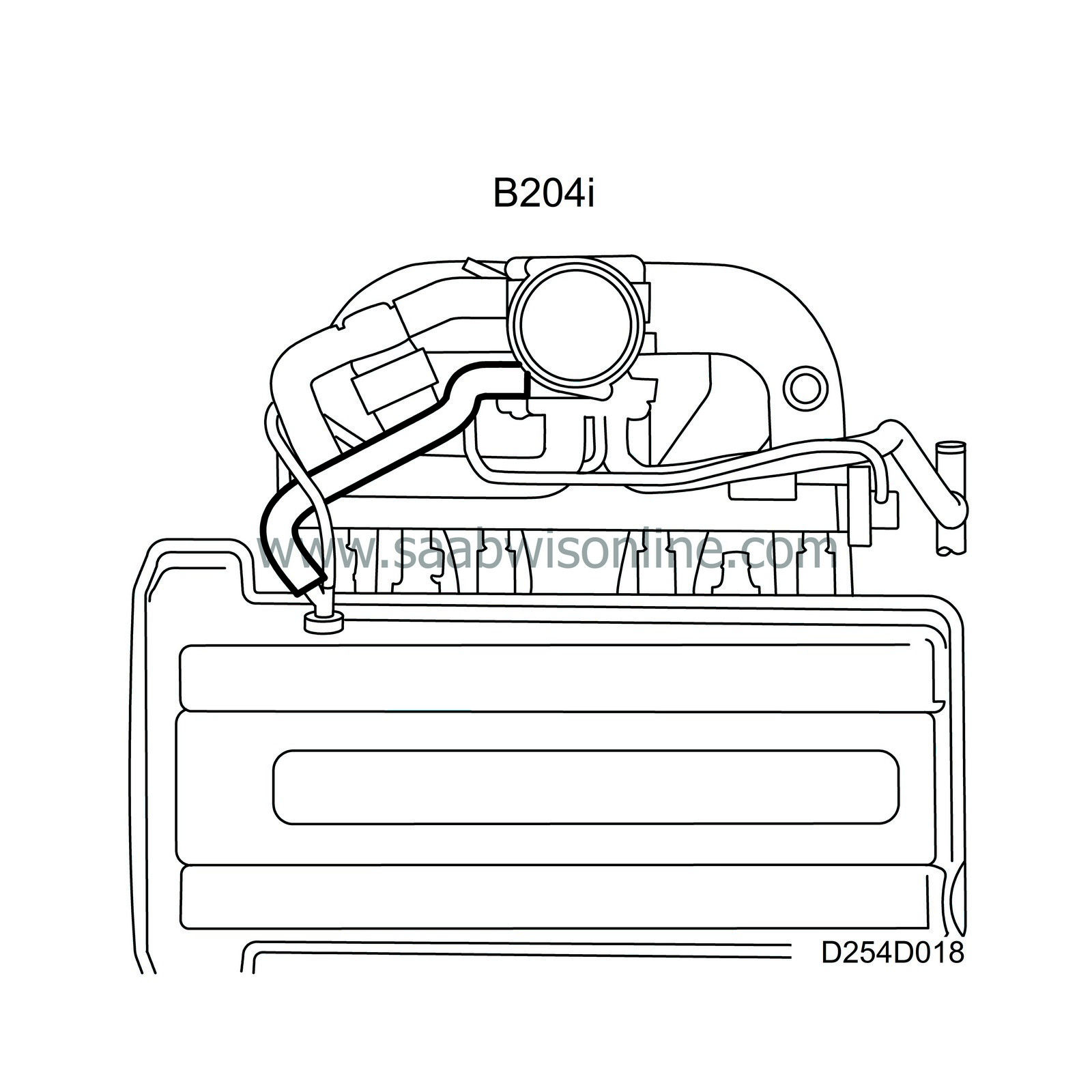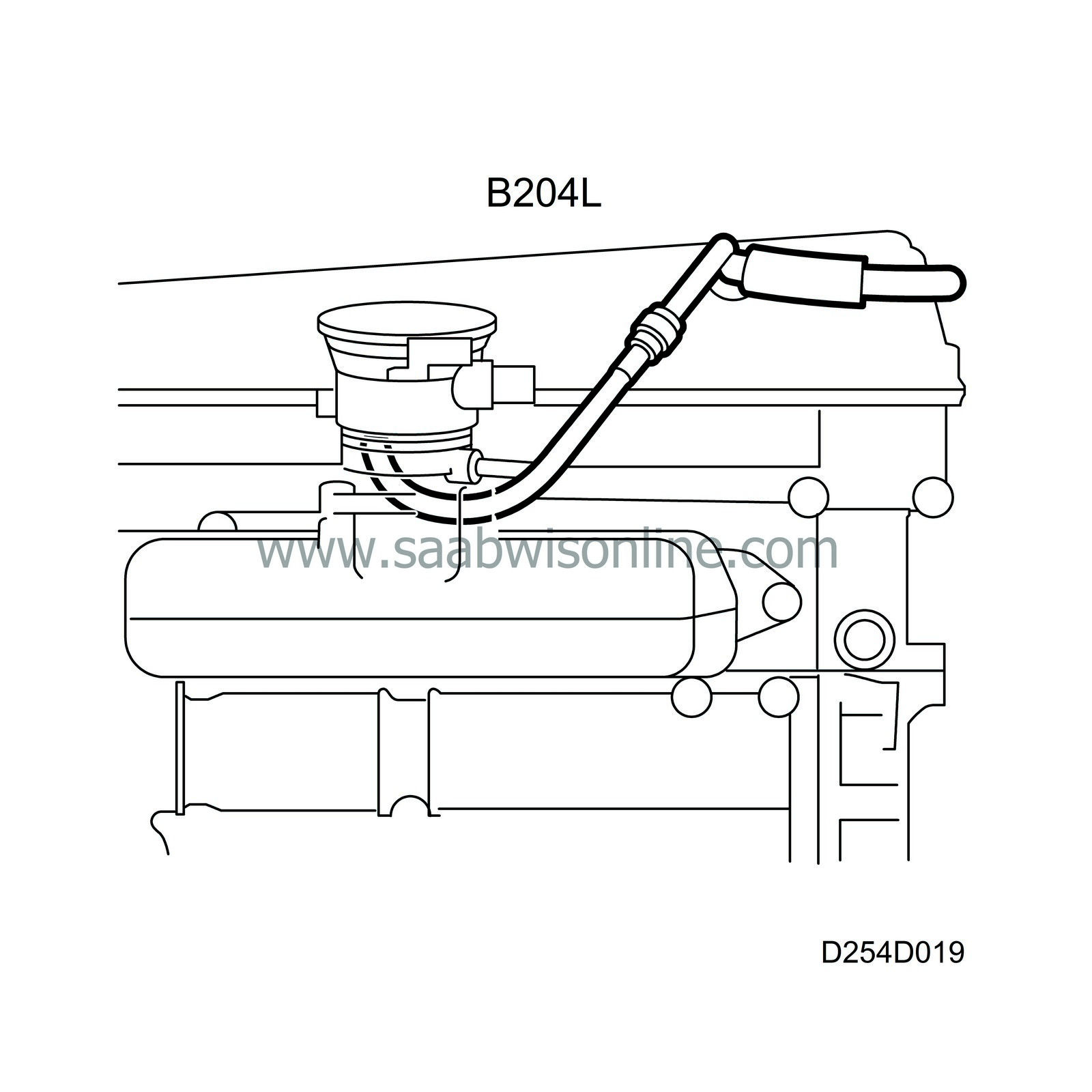Crankcase ventilation
| Crankcase ventilation |
The combustion gases flowing past the pistons and piston rings must be allowed to pass out of the engine. If the gases in the crankcase are not evacuated, the pressure in the crankcase will continue to rise until something breaks. The crankcase gases must not be allowed to pass out into the engine bay as they contain a large proportion of unburnt hydrocarbons. A system which recovers the hydrocarbons and prevents the pressure in the crankcase from rising excessively is used to evacuate the gases.
| B204i |

The hoses and their connections are sized to provide satisfactory evacuation of the crankcase gases under all operating conditions.
The gases in the crankcase pass from the nipple in the camshaft cover to the throttle body through a thin hose and a thick hose. In the throttle body the gases are mixed with the intake air and burned in the engine.
When the engine is run at low and medium throttle, the crankcase gases are passed to the throttle body through the thin hose connected after the throttle. At full load, the gases are passed through the thick hose connected before the throttle.
On the turbo engine the thin hose connected after the throttle is fitted with a check valve which prevents the build-up of overpressure in the crankcase.

On the turbo engine a pipe replaces the thick hose connected before the throttle valve on the normally aspirated engine. This pipe carries the crankcase gases to the turbocharger's intake pipe.


